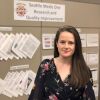NEW ORLEANS — The Orlando Pulse nightclub shooting on June 12, 2016 was the deadliest mass shooting in U.S. history. It was also the worst attack on the LGBTQ community in documented history and the deadliest terror attack in the U.S. since 9/11.
Christopher Hunter, MD, Ph.D, the Associate Medical Director of the Orange County EMS System, presented on the EMS response to the shooting and aftermath at the 2017 National Association of EMS Physicians annual meeting.
Memorable quotes on Pulse patient triage and care
Here are some memorable quotes and key takeaways from his talk.
“When people say this can happen anywhere, this (Orlando) is about as anywhere as it gets.”
“What we really ended up with over the course of the day was three different MCIs.”
“The civilians that were involved did not run away, they stayed.”
“One of the less sexy, but more important things that saved lives was throughput within the hospital.”
“I’m still not sure triage tags are the answer.”
“It’s difficult to coordinate when you have this many agencies responding to something.”
“Family reunification is something we were not prepared for in any way, shape or form.”
7 key takeaways on EMS response and transport
Here are seven key takeaways from the EMS response to Pulse, patient triage, patient transport and the challenges of media interest and family reunification.
1. Preparedness matters for performance
Drills may be one of the less flashy sides of preparedness, but they directly impact the cohesive performance of responding agencies when the big event happens.
2. Rogue responders
In a mass shooting like this, units are going to go “rogue.” The first unit to arrive on scene was not initially dispatched there, but ended up transporting 11 patients in two hours.
3. Dispatch is going to be overwhelmed
During the Pulse incident, dispatchers received over 600 911 calls over the course of the early morning. If the system is reliant on dispatchers to do anything beyond answer calls, such as sending text alerts to employees, there must be a back-up plan.
4. Triage tags might not get used
Very few triage tags will be used in a large urban environment, likely more useful in scenarios significantly further from a trauma center. During this event, anyone still alive with a bullet wound to a non-extremity was transported immediately upon extrication from the nightclub.
6. Pre-plan for family reunification
The family reunification center was a very unanticipated and resource-heavy need. Have locations predetermined with a hotline and a script ready for collecting the right types of information. Orlando is developing a free computer system for any agency to use that will help collect information on unaccounted individuals
7. Overwhelming media interest
News coverage will be more than the agency has ever seen. The media will do anything they can to gain access to sensational audio, photos and video. Lawyers will need to get creative. In Orlando, they used a law that protects any information related to an autopsy to ensure that photos of the crime scene were not released.
Learn more
To learn more about MCI planning, response, triage and patient care, read these EMS1 articles.
- How to use SALT to triage MCI patients
- Redefining ‘All Clear’ in active-shooter response
- Active shooter: Rescue Task Force medics get to victims faster
- Standard EMTs need to be ready for active shooters
- Hybrid Targeted Violence vs. Active Shooter Incidents
- Orlando shooting is latest teaching event for emergency responders
- 4 lessons for EMS providers from Urban Shield
- Responders need to level-up to match lethal capability of mass shooters
- Clear and concise radio communication is key to MCI management
- Rapid Reaction: EMS response is media focus in early phase of an active shooter



